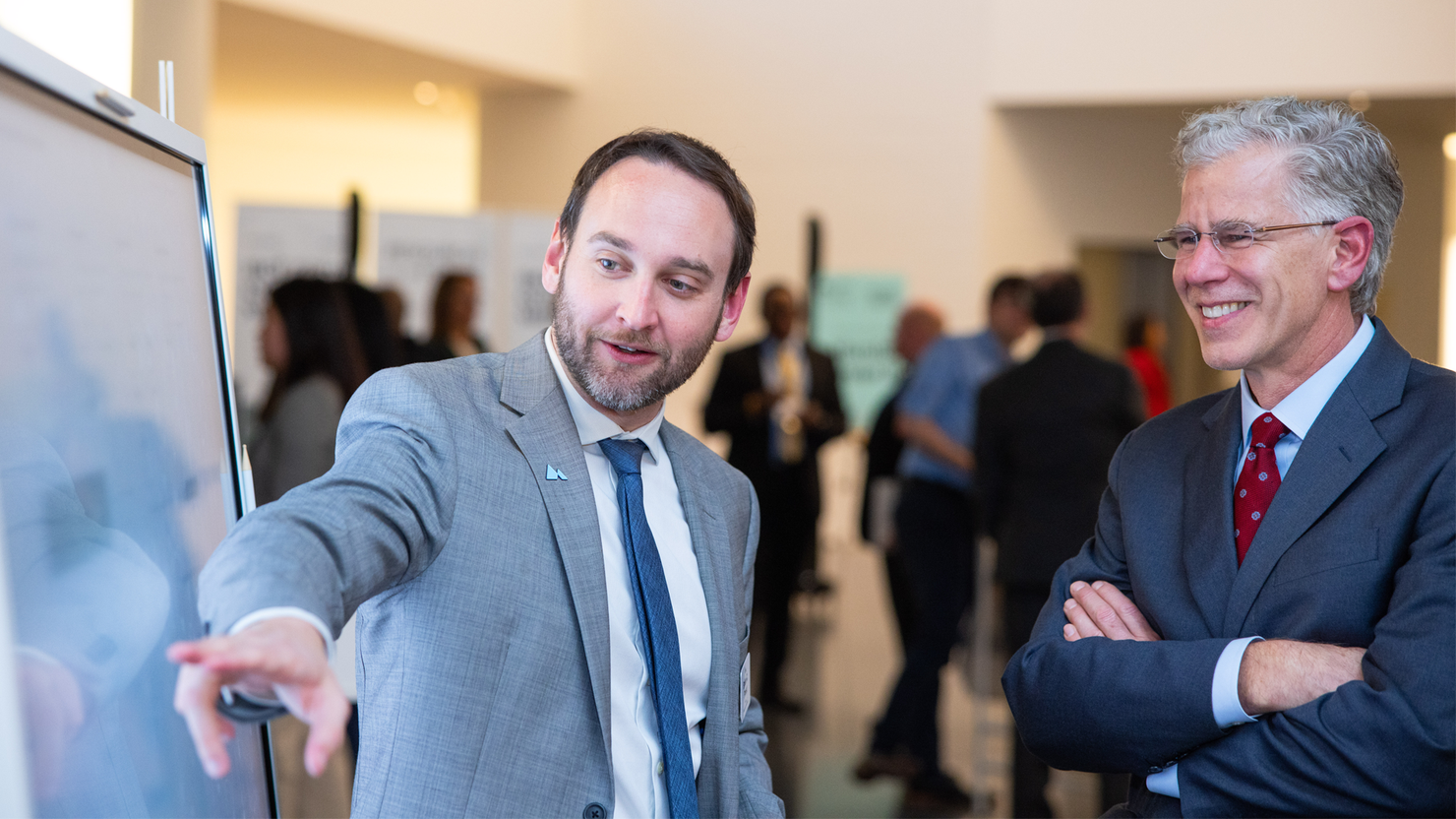Twice a month, we’re compiling the most relevant news stories from diverse sources online, connecting the latest environmental and energy economics research to global current events, real-time public discourse, and policy decisions. Keep reading, and feel free to send us your feedback.
Here are some questions we’re asking and addressing with our research chops this week:
How can the United States boost the domestic production and processing of critical minerals?
State officials in California and Arizona met last week with members of communities near the Salton Sea in California to discuss deposits of lithium in the sea. Interest in increasing domestic sources of lithium, a metal used to produce batteries for electric vehicles, has grown in recent years as the market for electric vehicles has expanded. But considerations of cost and environmental impact should accompany any efforts to increase domestic supplies of critical minerals such as lithium, say Beia Spiller and Michael A. Toman, scholars at Resources for the Future (RFF). In a recent Common Resources blog post, Spiller and Toman discuss takeaways from an RFF workshop about the intersection of vehicle electrification and the supply chain for critical minerals. “Any successful ramp-up in critical minerals exploration and extraction will require early, consistent, credible, transparent, and equitable community and stakeholder engagement,” they say. They add that the United States cannot meet all of its needs for critical minerals domestically; international cooperation on increasing supplies of these minerals—affordably and securely—will be essential.
How can the federal government limit pollution that results from the production of oil and gas?
The Biden administration has reinstated regulations that aim to reduce the risk of spills and damage to drilling machinery on offshore oil rigs. The Obama administration initially implemented the regulations after the Deepwater Horizon oil rig exploded in 2010, which caused the largest marine oil spill in history. These regulations are the most recent federal effort to reduce the risks of oil and gas extraction: last year, the administration proposed a rule which targets the methane that leaks during oil and gas production. Eric Kort, an associate professor at the University of Michigan, joined a recent episode of the Resources Radio podcast to discuss the significance and frequency of methane leaks, along with how the government could help reduce these leaks. “Observations and observation systems can really play an important role in identifying opportunities … to reduce emissions [from leaks] and ensuring that mitigation measures actually are effective,” says Kort.
As the effects of climate change intensify, how is solar geoengineering being considered as a potential tool for mitigating these effects?
Earlier this summer, the White House released a report that outlines a potential government research program for solar geoengineering. The report, which is unrelated to the Biden administration’s climate policy agenda, focuses on methods of solar geoengineering that would cool the earth by injecting chemicals into the atmosphere. As the effects of climate change intensify, researchers are acknowledging the need to evaluate the potential implications of solar geoengineering. On a new episode of the Resources Radio podcast, Tyler Felgenhauer, a research director and senior research scientist at Duke University, discusses a set of papers that RFF recently published which explore social science issues associated with solar geoengineering. Both Felgenhauer and the White House report stress that solar geoengineering would not be a replacement for reducing greenhouse gas emissions. “The only way to solve climate change in the long term is to lower our emissions to net zero and below,” says Felgenhauer.

Evergreen Time Machine
RFF research from our archives offers historical background and possible solutions for the challenges in today’s news.
While offshore wind has the advantage of avoiding some onshore climate risks (such as wildfires), extreme weather offshore (such as hurricanes) nonetheless poses other risks to the industry. Planning should reflect those risks and ensure that policymakers and developers take appropriate precautions against extreme weather.
In fall 2021, RFF held a workshop to discuss the future of the offshore wind industry in the United States. This week: The Biden administration recently auctioned the first-ever leases for offshore wind development in the Gulf of Mexico. Two firms bid for a lease off the coast of Louisiana; the auctions for other leases off the coast of Texas received no bids. The frequency of hurricanes in the Gulf was cited as one reason for the relatively low interest in the leases, which contrasts with the $4.37 billion netted in an auction for offshore-wind lease areas off the coasts of New York and New Jersey in 2022 but also recalls the tepid interest in oil-drilling sites in the Arctic National Wildlife Refuge in 2018.

Expert Perspectives
In Focus: Carbon Emissions from Wildfire
Unprecedented wildfires are turning Canada’s forests from carbon sinks into sources. Forest fires in Canada have released 290 million tons of carbon dioxide into the atmosphere, according to data released earlier this month. The amount is more than double the previous record and accounts for more than 25 percent of the global emissions total so far for 2023. In this installment of In Focus, RFF Fellow Matthew Wibbenmeyer speaks to the growing problem—and potential solutions.

Resources Roundup

Resources for the Future Announces CEO Transition Plans
Richard G. Newell has announced plans to transition out of his position as president and CEO at Resources for the Future (RFF) within the next year. Newell has served in this role for seven years and has worked with RFF in various capacities for more than 25 years. In the coming months, the RFF Board of Directors will conduct a national search for a new CEO. “I am confident that the seeds of excellence we’ve sown will continue to flourish under new leadership, and I am committed to helping ensure a successful transition,” says Newell. Learn more about RFF’s CEO transition.
Informing Decisionmaking on Solar Geoengineering with Interdisciplinary Research
Solar geoengineering refers to methods of intentionally cooling the planet by reflecting sunlight away from the Earth’s surface. Though related technologies pose risks, interest and research in solar geoengineering have increased as the effects of climate change intensify, and as researchers acknowledge the importance of interdisciplinary collaboration when considering the implications. On September 28 and 29, RFF will host a two-day conference about solar geoengineering that features an interdisciplinary group of experts who will discuss the associated challenges and uncertainties. RSVP to join the conference virtually or in person.
Fostering Participation in a Low-Carbon Future with the Oil and Gas Industry
Efforts to decarbonize the US and global economies will require participation from the private sector. Tisha Schuller, the founder and CEO of Adamantine Energy, recently hosted RFF’s CEO and president, Richard G. Newell, to discuss private-sector participation in decarbonization efforts on a recent episode of Schuller’s Real Decarbonization podcast. “Companies need to reduce the overall greenhouse gas emissions associated with their operations, and they need to reduce that to net-zero emissions over time,” says Newell. “This really needs to be not just an aspiration … it has to become a reality.”
Integrating Medium- and Heavy-Duty Vehicles into the Electric Grid
The electrification of medium- and heavy-duty vehicles is a crucial element of a transition to clean energy. Recent US policies support investments in the electrification of these vehicles, but challenges remain—especially in terms of preparing the electric grid to meet any increased demand for electricity as charging electric vehicles becomes more common. In a new journal article, RFF scholars Nafisa Lohawala and Beia Spiller explore these challenges and some investments and policies that could help facilitate the electrification of large vehicles. “By carefully designing policies based on sound research and analyses, an equitable, efficient, and cost-effective transition to electrification [of medium- and heavy-duty vehicles] can be achieved,” they say.
Navigating a Four-Day Workweek in Washington, DC
The frequency of a four-day workweek is increasing among organizations in Washington, DC. For the last five years, RFF has offered the option of a four-day work schedule for its employees during summer months, with about half of the staff participating, notes RFF’s Vice President for Finance and Administration Carolyn Mollen. Elizabeth Wason, the senior editorial manager on RFF’s communications team, acknowledges the challenges of compressing her work into a shorter schedule, but says, “Something like a four-day workweek helps people to live their lives in a way that’s a little more humane.” Read more about how organizations in Washington, DC, are approaching a four-day workweek.

🎨 Climate in the Culture 🎵

A couple of video games that center environmental themes recently have generated buzz in the gaming industry. Starfield, which debuted earlier this week, is set in 2330, after humans have left an uninhabitable Earth to settle elsewhere in space. Players can explore and gather raw materials on 1,000 planets, each with different landscapes, flora, and fauna. Loftia, a multiplayer online game that’s still in development, is set in a so-called “solarpunk” world, where humans live close to nature and rely on sustainable sources of energy. In the game, players power sustainable farming practices with renewable energy and collaborate on community projects. Loftia’s founders set a fundraising goal of $150,000 to fund the game’s development; their crowdsourcing campaign has raised over $1.2 million.








